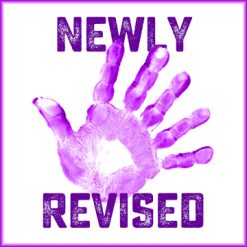|
How To Develop Original Characters
For Your Voice-Over Work & Demos
By Jean Ann Wright
Actress & Author
©2008 Jean Ann Wright
 As a voice actor, you need the ability to develop original characters from scratch. These characters may be used in animation, in a commercial or other types of voice-over work. You’ll also want to display some original characters in your voice-over demo. As a voice actor, you need the ability to develop original characters from scratch. These characters may be used in animation, in a commercial or other types of voice-over work. You’ll also want to display some original characters in your voice-over demo. But where do these characters come from? And how do you begin?
START WITH QUESTIONS
In acting school we learn to develop a character in a script by asking lots of questions. For instance:
PICK A METHOD
Different people work differently.
Some actors get into a playful mood and work instinctively, experimenting with different voices and character types until they find something they like.
Others improvise with another actor, developing a personality that way.
Some write scenes, developing their characters on the page. Others like to find a photo or drawing that inspires them, or to draw a character themselves.
Choose a method that works for you, and try to develop at least five different characters:
AND SEE THEM!
Now pick a character and visualize him.
Determine: Is he human, animal, or a fantasy? What does he look like? How tall? How heavy? What clothes does he wear? How does he walk and move?
Very important for voice-overs:
How does he talk? How do his facial features affect his voice? An overbite will make him talk one way. No teeth will make him sound differently. Is his voice nasal?
Does he have a distinct mannerism? Why? What is his attitude?
DIG EVEN DEEPER
Where does your character live? If your pig lives in outer space, he may sound differently than a pig down on the farm in Arkansas.
Next, how does your character’s surroundings affect him? If he spends all his time in a dark forest, maybe he can no longer see well – or, bright light might temporarily blind him.
HMM, WHAT IF …?
Ask and answer “what if…” questions to give your character unique traits. Be imaginative! For instance:
How would those problems affect my personality? Would they change my voice?
SHOW YOUR SKILLS
Do your characters show off your own special skills as a voice actor?
Why do we like your character? Can we identify with him? Is he like us? Is he vulnerable, so that we have sympathy with him?
Are your characters funny? Are they touching?
CATALOG CHARACTERS
Finally, you’ll want to catalogue your characters so that you can draw on them whenever you need them. Here’s how:
File your characters by type. List name, age, attitude, personality, and how each looks.
Then list everything you need to know about the voice: placement, texture, pitch, range, rhythm, phrasing, style, and any other special characteristics.
If you have a drawing, file it with the character. Include a biography, if you have one. Write a phrase or two of copy that will help you remember the voice, and include that.
Developing your own characters is fun! Hopefully, it will be profitable for you, as well.
Jean Ann Wright is author of Animation Writing and Development (Focal Press, 2005), and is currently writing Voice-Over for Animation (Focal Press) with co-author M.J. Lallo, to be published in early 2009. The new book will feature a CD directed by Lallo, and include more information about developing characters. Wright is an actress with a degree in Theatre Arts from Pasadena Playhouse. She is also a member of the Women In Animation Voice-Over group, and has worked in animation as a writer and artist.
Email: jjwright@verizon.net |
Tell Us What YOU Think!
Please Note: Since we check for spam, there will be a slight delay in the actual posting of your comment.
Comments
No comments have been posted yet. Hurry, and you could be the first!









click for new article alerts